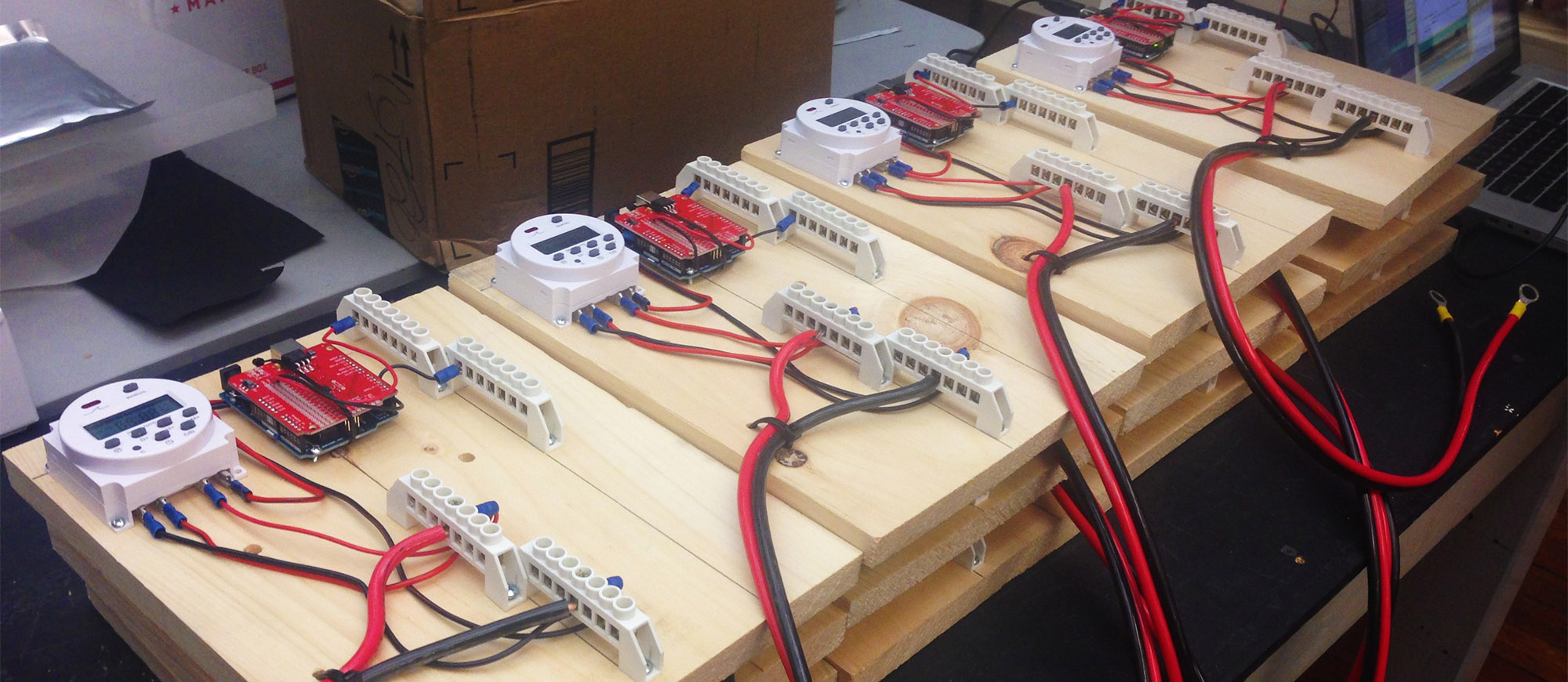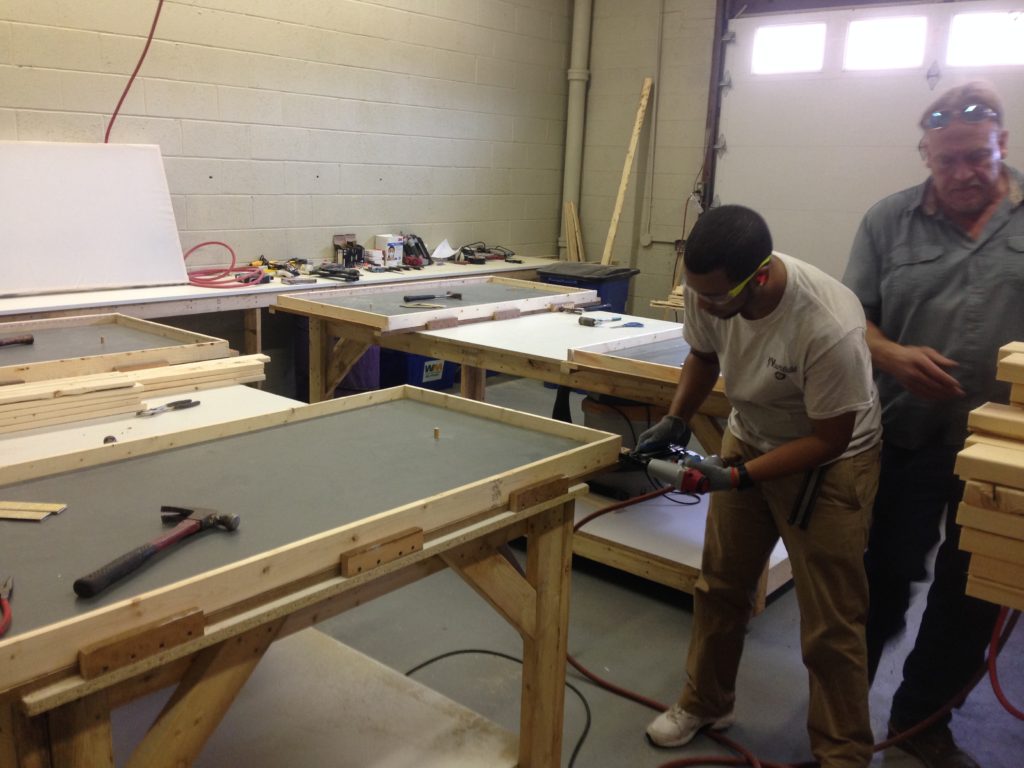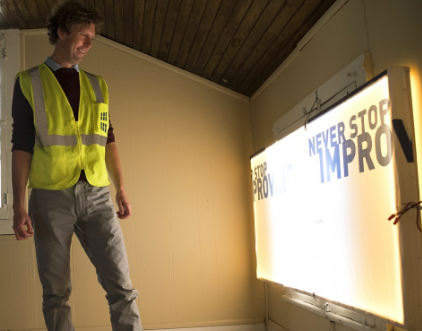Breathing Lights was a site-specific installation in 200 vacant buildings owned by the cities of Albany, Schenectady and Troy, NY. The buildings were in various states of disrepair, many had broken windows, debris and remnants of past residents. Some had vermin, black mold, and evidence of squatters and illicit drug activity. Installing in these complicated sites was challenging and involved over six months of preparation and countless hours of coordination with multiple partners.

Overview & Process
Phase 1
Installing the “breathing” lights in 200 vacant homes took six months of planning. First, each city’s land bank shared their current inventory of vacant homes. Potential sites were each photographed and mapped. The lead artist and architect marked up printed photographs of each house facade, detailing which windows were to be lit.


Phase 2
Next, approximately 1,500 “light boxes” were fabricated by youth and mentors at the Social Enterprise and Training (SEAT) Center in Schenectady. Each light box consisted of a 30×60” simple wooden frame with off-the-shelf LED light strips, chosen for their color value and intensity, stapled around the inside perimeter and diffused by plastic sheeting. 200 control boards were designed and built at the RPI Lighting Research Center, each consisting of an Arduino circuit board with PWM shield, a timer, and fuse. RGB amplifiers installed throughout the house would boost the signal from the control board to the lights.
Phase 3
Next neighborhood contractors were hired. The contractors entered chosen sites, installed light boxes and control boards, and connected them to their power source, portable batteries. The windows of each house ran off one or two 6-volt batteries, which were installed inside a locked trunk bolted to the floor. The batteries were delivered and replaced every eight to ten days by a dedicated battery crew. Wire connected the batteries, control panels and light boxes. The contractors removed broken glass as needed, secured the houses and installed locks. Finally, a sign was mounted to the front of each house directing passersby to the Breathing Lights website.


Final Phase
After the initial installation, work was not yet complete. During the two-month installation, the lit houses required constant maintenance. The batteries needed to be continuously removed, replaced and recharged. Several times a week, staff members in each city completed “night watch,” driving the entire route and noting which houses had lights out or not working properly. A support technician was deployed each day to troubleshoot at the sites flagged on night watch.
